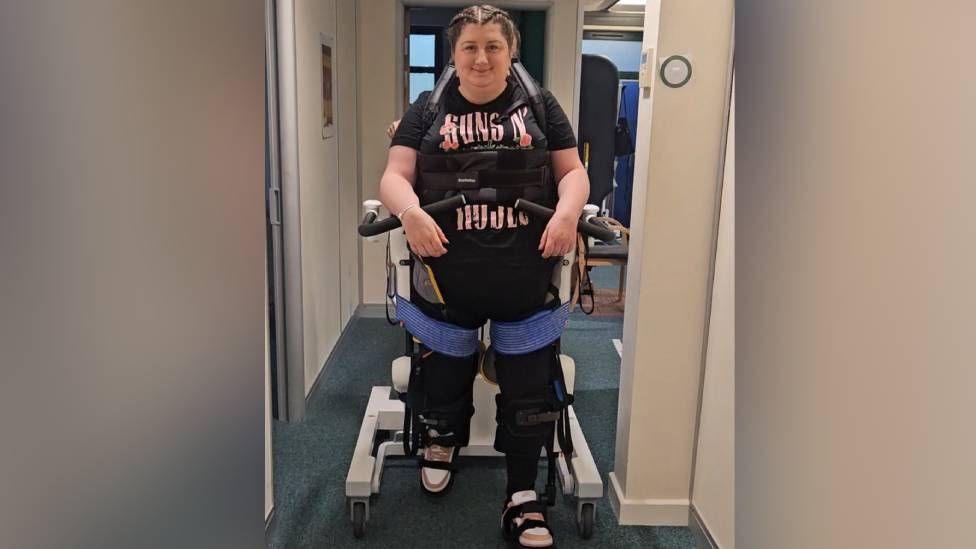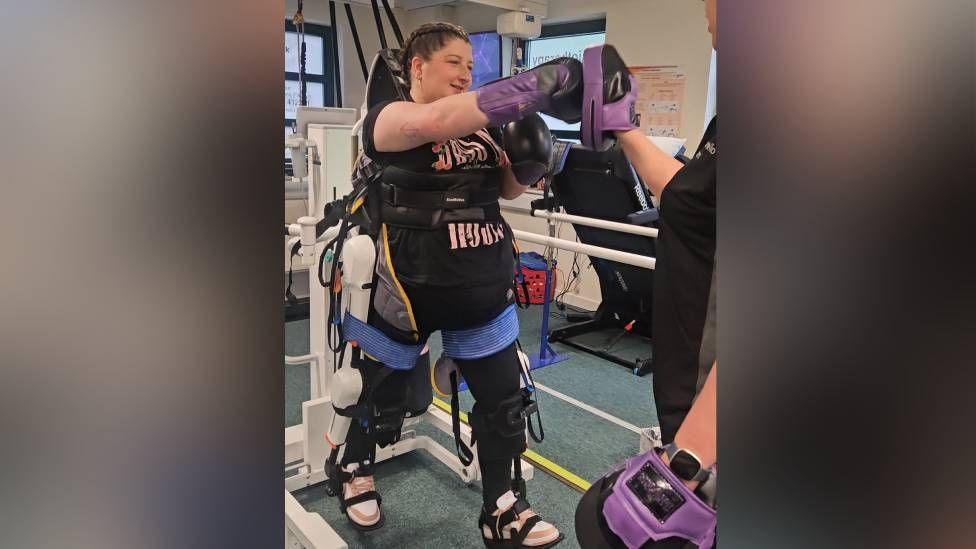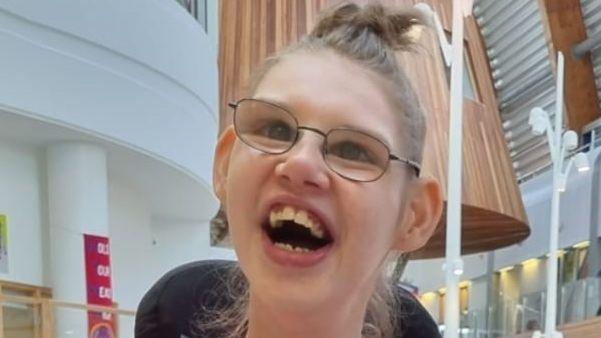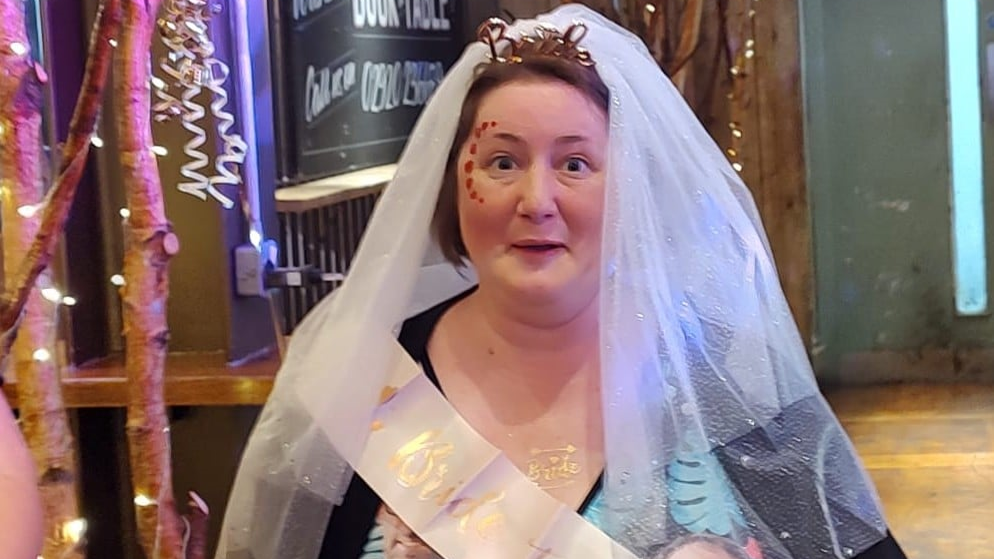Robot skeleton helps paralysed woman 'walk again'

Sophie Shuttleworth said walking for the first time in two years made her "really emotional"
- Published
A woman who became paralysed from the chest down after contracting viral meningitis has described the physical and mental benefits of a "life-changing" exoskeleton.
Sophie Shuttleworth, 32, from Newport, was put into an induced coma after developing the illness in July 2022, and has been using a wheelchair ever since.
However, she said that as well as bringing physical benefits, the exoskeleton allowing her to stand up for the first time in two years made her "really emotional".
"And once you get over the emotion, it's very nice to be active," said Ms Shuttleworth, who swam everyday before her illness.
Doctor assumed disabled woman did not have sex
- Published1 May 2024
Bride overwhelmed as bus takes her to wedding
- Published2 September 2024
Parents' pledge to baby boy born without a hand
- Published16 February 2024
The equipment, known as the Exomotus M4, is a robot that moves the user's leg in a natural walking pattern.
Ms Shuttleworth began using it in January during therapy sessions at Morello Clinic, a Newport-based physiotherapy and rehabilitation service.
Now she and eight others who use the exoskeleton are hoping to raise £50,000 to fund its use at the clinic for a year.
"We all have different injuries and get different benefits from it," she said, adding that the equipment will "literally transform people’s lives".
Ms Shuttleworth said the exoskeleton has brought her "massive benefits", helping her circulation and bone density, having already been diagnosed with osteopenia, external - loss of bone density - from not putting weight on her legs for two years.
"It's also really good for me mentally," she said. "I have now been able to stand up for the first time in two years and that's been really emotional."

Sophie Shuttleworth began using the exoskeleton in January
Ms Shuttleworth swam every day before her illness, and said that shortly before she swam 22 miles - the equivalent of the English Channel - at her local pool to raise money for charity.
"The endorphins I used to get from swimming are the same feeling I get now when I walk," she said.
She spoke to the BBC last year when she was struggling to find suitable housing, but has since moved into a ground floor apartment that she said meets her needs.
She added that she was "fiercely independent" before her illness, and that while she remains independent, she still has to rely on help from family members.
She hopes the exoskeleton and apartment will help her become increasingly independent.
"It's only been two years, so I hope to become more independent," she said.
Related topics
- Published28 August 2024

- Published19 March 2022

- Published2 August 2024
